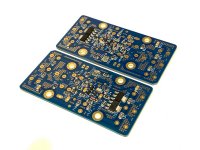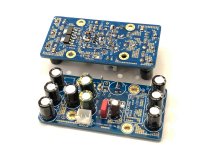I'm confused. You state the cap multiplier is a Mark Johnson design yet when I click on your link I see it being called a "Juma" design.
Which is it?
Also, I'm not really into SMDs. So what readily available through-hole transistors can be used for A1 and T1 in the cap. multiplier?
Thanks.
The Mark Johnson design is in the Juma Easy Peasy thread. There is a through hole version a few pages back in that thread. It’s bigger though and designed for a speaker amp. However it will work fine for a headphone amp.
Looks like this:
Only if you were interested in exploring higher bias currents. At 45mA the 100mA A1381 is perfectly happy. With +/-24v rails the dissipation is just over 1w which is at its limit.
So if you want to run either higher bias or higher voltage rails, the added power handling of larger A1837 makes sense.
I would like to think that there is some magic in the 2SA1837, made by Toshiba and now discontinued. As this might be the best audio driver transistor ever made.
So if you want to run either higher bias or higher voltage rails, the added power handling of larger A1837 makes sense.
I would like to think that there is some magic in the 2SA1837, made by Toshiba and now discontinued. As this might be the best audio driver transistor ever made.
is this amp quite the same as the Aksa Lender HPA?
It has a similar input stage topology (Aksa Lender differential PNP long neck pair coupled with the unique VAS strapped across the two legs of the pair), but the output stage is quite different with a mu-follower output and most importantly, is DC-coupled so the bass extension and transparency will be readily apparent. Of course it requires a dual rail power supply. But that is easily provided with the recommended Prasi layout dual rail cap mulitiplier. The ampboard itself contains its own CRCRC for added filtering and stereo separation even when using a common PSU.
This photo shows you all the components needed for a fully functional amp:
Here is a closeup of the cap Mx:
Of course, you are welcome to use your own dual rail PSU as long as you can provide anywhere from +/-15v to +/-24v. Usual 7818/7918 or your favorite shunt regulated supply, etc. A Salas DCSTB PSU would work very well too.
One of the simplest would be a trafo, bridge, smoothing caps then 7818/7918 regulators. Although parts count of Mark Johnson cap multiplier is quite low too.
Last edited:
SS buffer with H2 predominant and adjustable
Hi X, how your amps sound with music with high/very DR? And the subwoofer with the same very good recording?
Hours ago I remembered this thread, after getting angry when listening to a 2016 acoustic music vinyl, of a digital master.
I calmed down to enjoy one of my many musical treasures, a 1958 vinyl with a fantastic selection of Russian / Soviet popular music of that time. Sound worse, tubes saturation is appreciated but I was instantly moved. That is what I am looking for.
Have you thought about the SS buffer with H2 predominant and adjustable?
Note: the adrenaline is very addictive, I want more, but from digital masters too.
Hi X, how your amps sound with music with high/very DR? And the subwoofer with the same very good recording?
Hours ago I remembered this thread, after getting angry when listening to a 2016 acoustic music vinyl, of a digital master.
I calmed down to enjoy one of my many musical treasures, a 1958 vinyl with a fantastic selection of Russian / Soviet popular music of that time. Sound worse, tubes saturation is appreciated but I was instantly moved. That is what I am looking for.
Have you thought about the SS buffer with H2 predominant and adjustable?
Note: the adrenaline is very addictive, I want more, but from digital masters too.
A sub changes the visceral impact that’s for sure. Not all music needs it. Like small jazz ensembles don’t. Maybe big orchestral pieces do.
I made a SE Class A CFP Preamp / headphone amp that has adjuster H2.
The DLH amp has adjustable H2 and I made a small HPA/preamp version here:

Here was study of varying H2/H3 for bigger DLH power amp.
DLH Amplifier: The trilogy with PLH and JLH amps
I made a SE Class A CFP Preamp / headphone amp that has adjuster H2.
The DLH amp has adjustable H2 and I made a small HPA/preamp version here:
Here was study of varying H2/H3 for bigger DLH power amp.
DLH Amplifier: The trilogy with PLH and JLH amps
Last edited:
Building up the SMT version of the Melbourne. Using Pb/Sn solder paste from syringe and hot plate at 120C from the bottom and a 300C hot air pencil from the top.
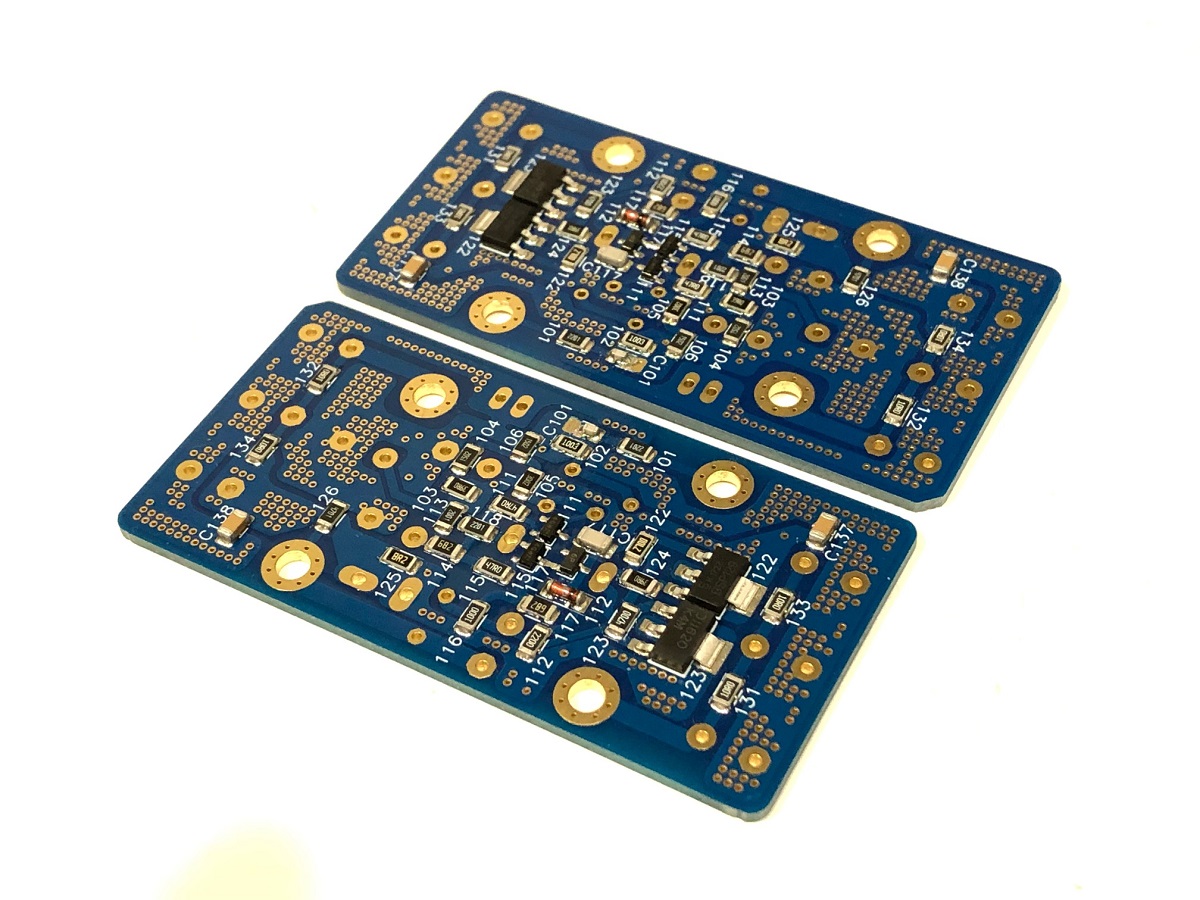
The top side is all through hole and easy soldering. Here, I am choosing to jumper the output cap for the DC-coupled option. Two test probe leads are added to check output bias current.
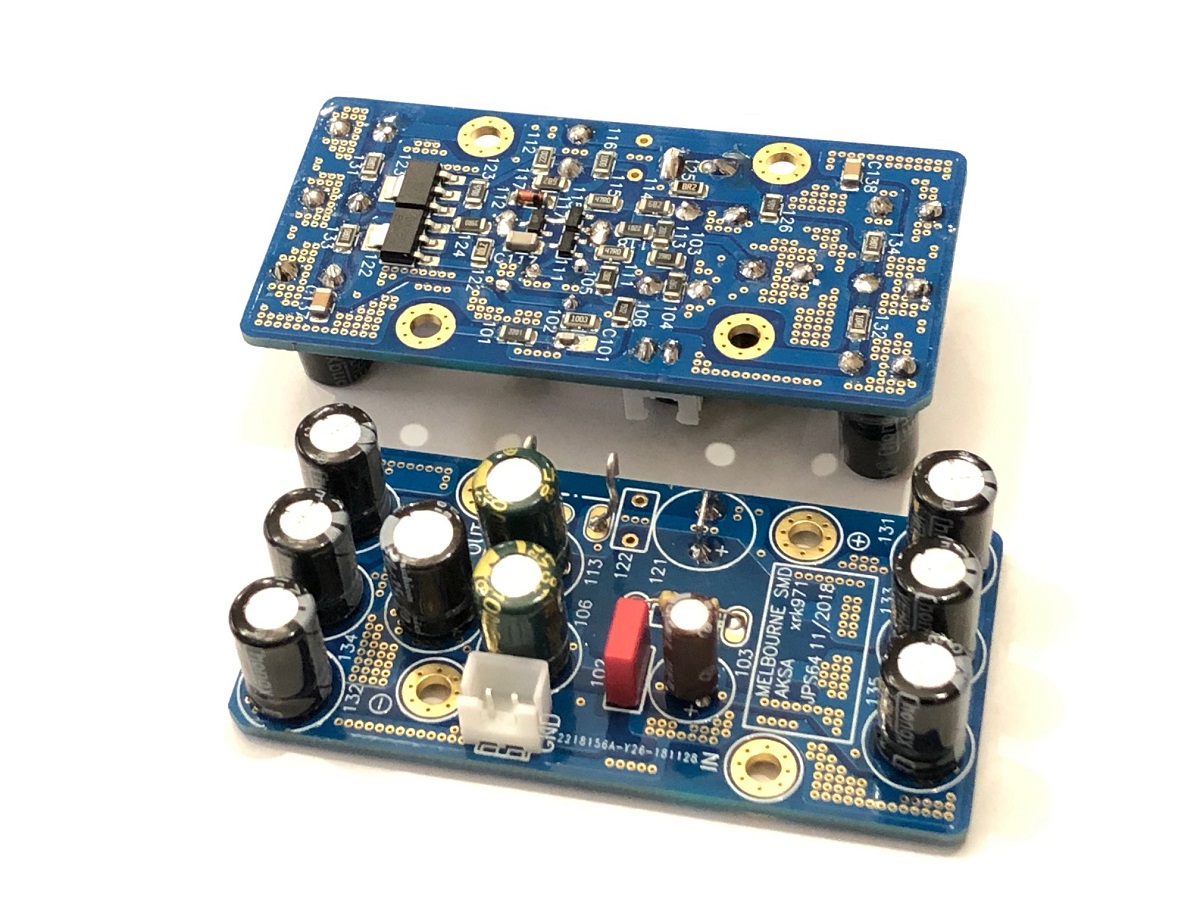
The top side is all through hole and easy soldering. Here, I am choosing to jumper the output cap for the DC-coupled option. Two test probe leads are added to check output bias current.
Attachments
Last edited:
An interesting concept is to use the Melbourne to drive the new American Beauty output buffer.
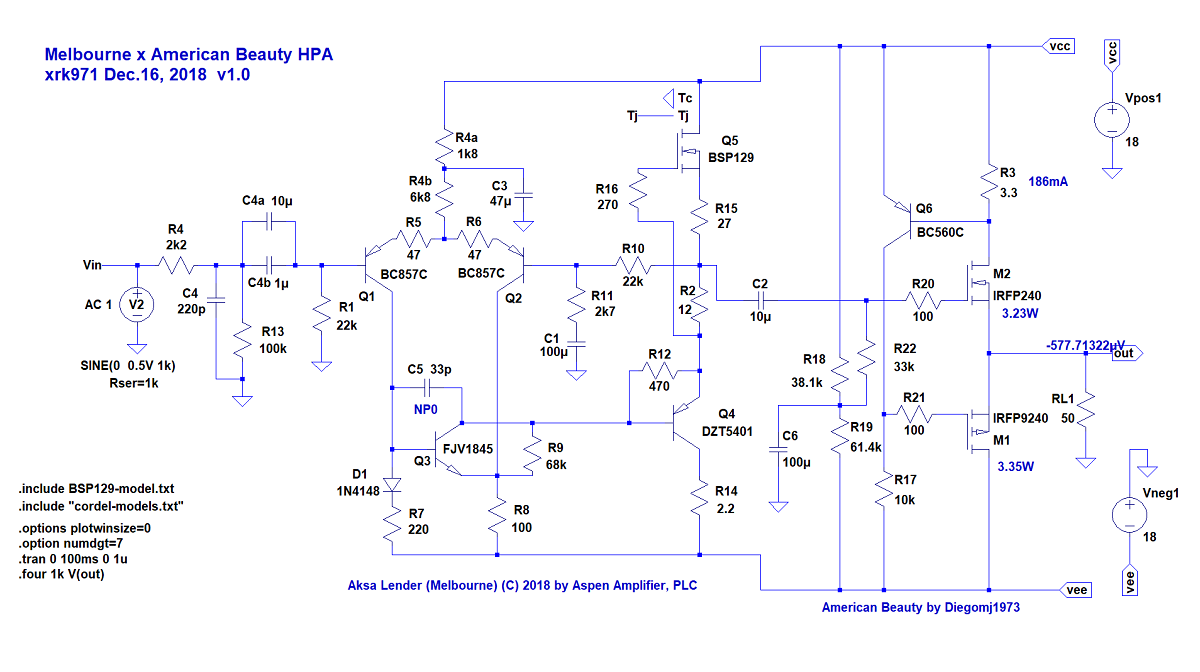
Here is 8Vpp into 50ohms (Blackman-Harris window):
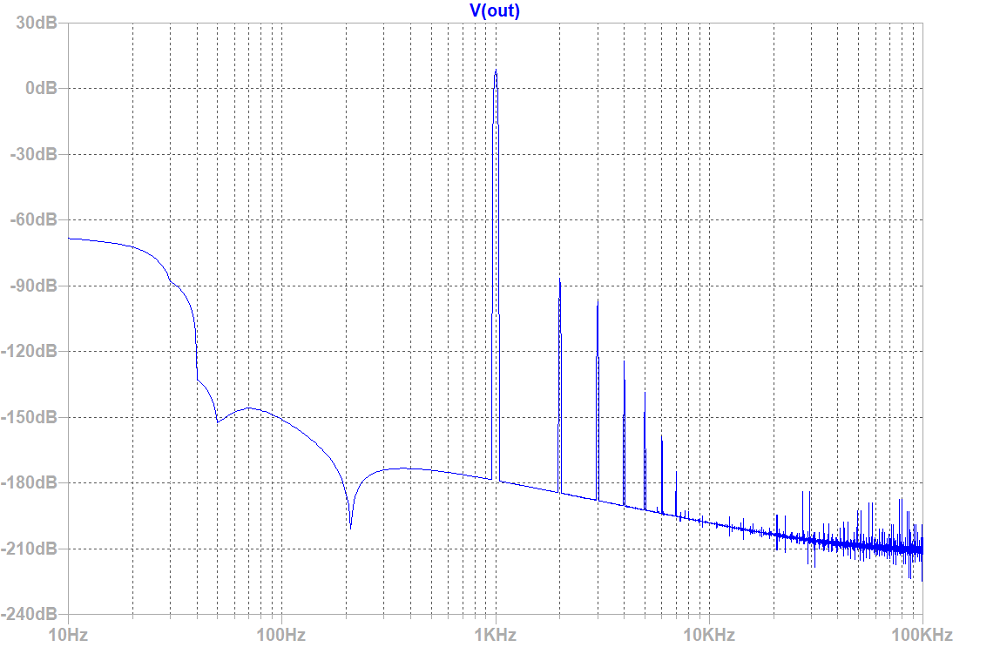
Total Harmonic Distortion: 0.001772%(0.001464%)
Here is 8Vpp into 50ohms (Blackman-Harris window):
Total Harmonic Distortion: 0.001772%(0.001464%)
looking forward to my boards - this is what I will do as well
Did I send you boards yet or are you waiting for version two compatible with M2X amp?
Works like a charm on my MoFo, as you can see in the above photo. You may want a higher gain than default value in schematic if you need more volume. The gain can be adjusted by changing the R118 resistor between the -ve input transistor base and the shunt capacitor.
Gain is (R118+R118)/R118, currently (33k+5.6k)/5.6k=16.8dB. If you make R118 1k5 for example, you can get 27dB which, for most applications will get you to be able to clip the amp with most sources. Don’t change R119 though as that needs to match the input impedance setting resistor.
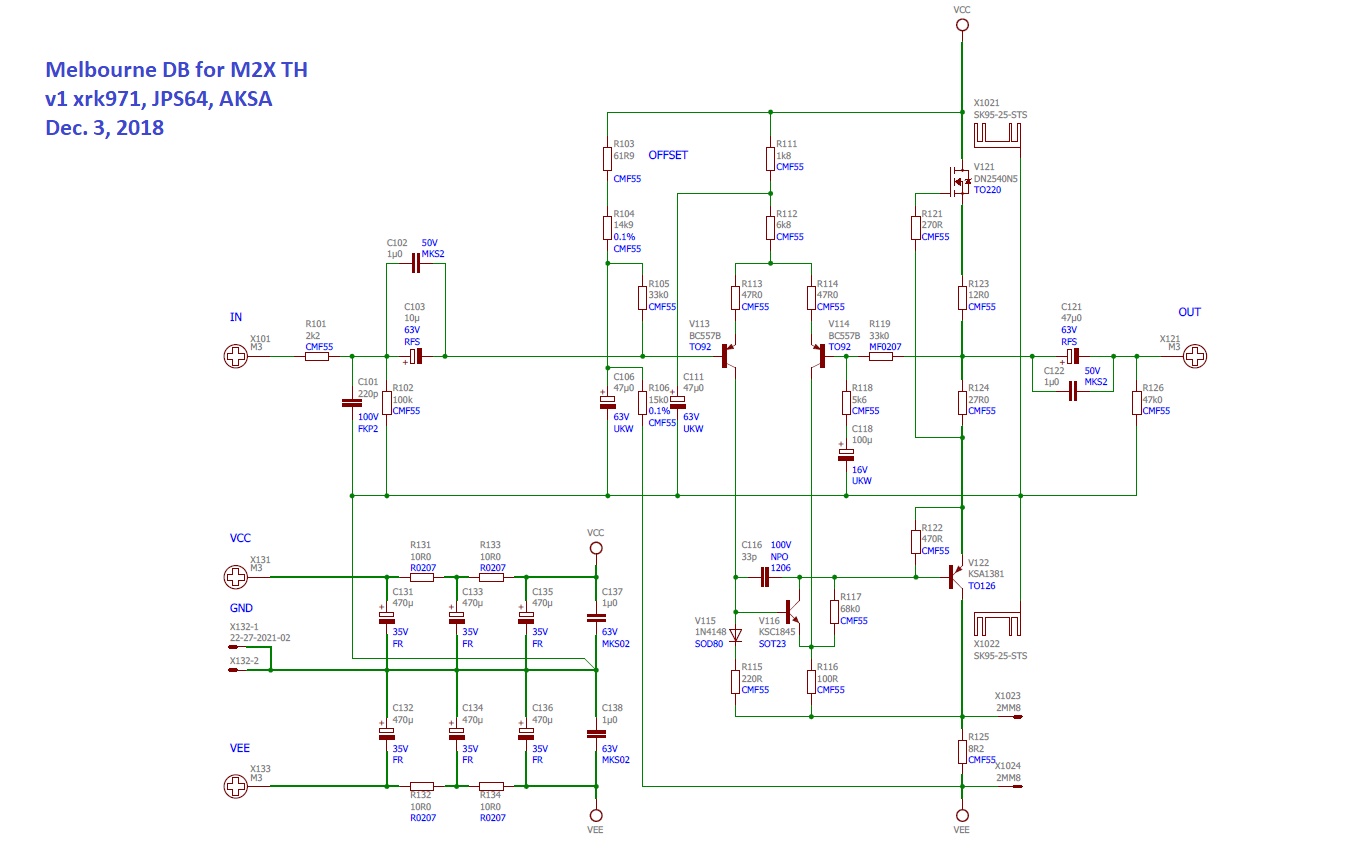
Gain is (R118+R118)/R118, currently (33k+5.6k)/5.6k=16.8dB. If you make R118 1k5 for example, you can get 27dB which, for most applications will get you to be able to clip the amp with most sources. Don’t change R119 though as that needs to match the input impedance setting resistor.
Last edited:
- Status
- This old topic is closed. If you want to reopen this topic, contact a moderator using the "Report Post" button.
- Home
- Amplifiers
- Headphone Systems
- The Melbourne Class A Headphone Amp and Pre-amp
